Catherine of Aragon was just three years old when she was betrothed to the Prince of Wales, Arthur Tudor. Being the youngest daughter of Ferdinand II of Aragon and Isabelle I of Castile, she was used for her parents to gain political power. Her parents wanted to create an alliance with England and marrying her to the future King of England was the perfect opportunity. However, all good plans can fail, especially in the 16th century!

Catherine of Aragon: Did She Cause the Religious Reformation?
Catherine of Aragon was Queen Consort of England between 1509 and 1533. She fought to keep her marriage and it was part of the reason for the religious reformation.
The Early Life of Catherine of Aragon
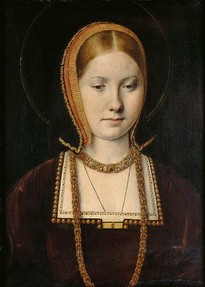 The Spanish princess made her way to England when she was only 16-years-old. She knew little English and was entirely dependent on the men around her. She never argued about her marriage to the young Arthur Tudor, presumably she was raised to be a queen. Catherine met her future husband on November 5, 1501 but very little is known about her reaction or opinion of the young Tudor prince. All that is known is how Arthur wrote to her parents to inform them that he would be a “good and loving husband”.
The Spanish princess made her way to England when she was only 16-years-old. She knew little English and was entirely dependent on the men around her. She never argued about her marriage to the young Arthur Tudor, presumably she was raised to be a queen. Catherine met her future husband on November 5, 1501 but very little is known about her reaction or opinion of the young Tudor prince. All that is known is how Arthur wrote to her parents to inform them that he would be a “good and loving husband”.
They married 10 days later and half of her 200,000 crown dowry was paid. Shortly after they moved to Ludlow Castle and that was when the trouble started. Both fell ill just a few months into their married life. Sweating sickness was in the area at the time and this is presumed by historians to be their illness. While Catherine made a full recovery, Arthur did not. He died on April 2, 1502, leaving Catherine a 17-year-old widow in a foreign country.
Catherine had no choice but to turn to her father-in-law, Henry VII of England. Henry didn’t want to lose the dowry or the alliance with Spain so arranged for her to marry his second son, Prince Henry Tudor. Catherine’s parents agreed and a papal dispensation was sought to allow for Catherine to marry her brother-in-law. However, Henry was still too young to marry his bride since he was just 12-years-old.
Read More About Catherine of Aragon
 |  |  |
| Catherine of Aragon: Infanta of Spain... Only $15.39 | Catherine of Aragon | Katherine of Aragon, The True Queen: ... Only $13.99 |
Catherine of Aragon Becomes Queen Consort of England
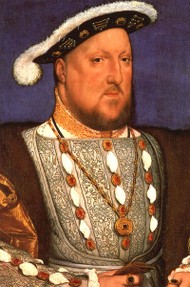 It was a very uneasy time for Catherine. She was banned from leaving England but Henry VII started having second thoughts about the betrothal. When Isabelle of Castile died in 1504 and the relationship between Henry VII and Ferdinand II degraded, Catherine was left penniless and without a future husband. Prince Henry was reported saying how he didn’t want to marry his brother’s bride; however, this may have been due to his father’s wishes.
It was a very uneasy time for Catherine. She was banned from leaving England but Henry VII started having second thoughts about the betrothal. When Isabelle of Castile died in 1504 and the relationship between Henry VII and Ferdinand II degraded, Catherine was left penniless and without a future husband. Prince Henry was reported saying how he didn’t want to marry his brother’s bride; however, this may have been due to his father’s wishes.
It took Henry VII’s death for Catherine of Aragon to know her future. Prince Henry became King Henry VIII of England and he made the decision to marry his betrothed. They married on June 11, 1509 and were crowned together on June 23. Everything was working out perfectly for the young, 23-year-old bride. All she had to do now was provide Henry with the heir that he needed.
Catherine of Aragon fell pregnant early into the marriage and by January 31, 1510, she had given birth to a daughter but the baby was stillborn. While the couple were devastated, this was not the end for Catherine. Henry knew that this was possible and common with the medical care being so poor. They were also still young and there was plenty more time for children.
Catherine did not disappoint, falling pregnant soon after the stillbirth and having a baby boy on New Year’s Day in 1511. The excitement was short-lived though as the young Prince Henry, as he was named, died at seven weeks. Again, the couple were devastated but they kept trying. Finally, in 1516, Catherine gave birth to a baby that would survive childhood, Princess Mary, named after Henry’s younger sister.
Catherine went onto have two more pregnancies that ended in disappointment. By 1518, Henry VIII realised that he would not get the heir that he needed. This was the start of the Queen’s downfall.
Henry VIII Meets Anne Boleyn
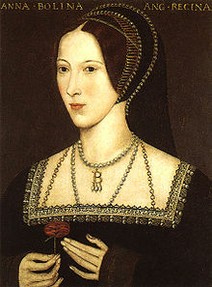 It wasn’t Anne Boleyn who caused Henry to seek for a divorce, at least not completely. Henry VIII was starting to view the marriage as invalid in God’s eyes. He was extremely religious, as were all the people in England during this time, and believed that the worlds in the Book of Leviticus of how a man should not marry his brother’s wife were true. He started to believe that the marriage would never produce the heir because God saw it as wrong.
It wasn’t Anne Boleyn who caused Henry to seek for a divorce, at least not completely. Henry VIII was starting to view the marriage as invalid in God’s eyes. He was extremely religious, as were all the people in England during this time, and believed that the worlds in the Book of Leviticus of how a man should not marry his brother’s wife were true. He started to believe that the marriage would never produce the heir because God saw it as wrong.
It wasn’t until 1526, when Henry VIII first set eyes on Anne Boleyn, that he started searching for a divorce. Before this time, women would agree to be his mistress. Anne was the exception; she wouldn’t be with the King without being Queen. Henry VIII wanted her and he needed to remove Catherine to get it.
Read More About Anne Boleyn
 |  |  |
| The Life and Death of Anne Boleyn: 'T... | GRACEART Anne Boleyn Faux Pearl Neckl... Only $9.99 | Love Letters of Henry VIII to Anne Bo... Only $4.99 |
Catherine of Aragon Fights the Divorce
Catherine did have an easy way out open to her. Henry VIII offered her an annulment but she would have to live in a nunnery for the rest of her life and be known as the Dowager Princess of Wales. Catherine refused this. She believed that the marriage was valid and loved her husband. She wanted to remain with him, never arguing about the number of mistresses he had or the fact that a son from one of his mistresses was no in line of succession.
Henry VIII had no choice but to go to the Pope for a divorce. His grounds were that the marriage was never valid – Catherine had to have consummated her marriage with Arthur and was lying about it. However, even in court, Catherine swore that she had never consummated her first marriage – it wasn’t valid and so her marriage to Henry was.
The Pope sided with Catherine but this could have been due to the influence from Spain, where Catherine’s nephew was now the Holy Roman Emperor. Whatever the reason, Henry had to find another way around the marriage so he could be with Anne Boleyn.
Catherine of Aragon’s Stubbornness Causes the Religious Reformation
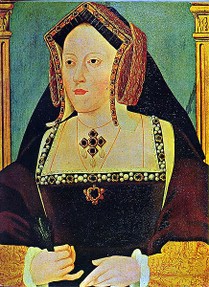 Henry VIII knew what he wanted, just not how to get there. It was Thomas Cromwell and Anne Boleyn who helped him realise that he could break away from Rome. He wouldn’t be answerable to the Pope but would still have a connection to God. This was perfect for him to get the divorce that he needed.
Henry VIII knew what he wanted, just not how to get there. It was Thomas Cromwell and Anne Boleyn who helped him realise that he could break away from Rome. He wouldn’t be answerable to the Pope but would still have a connection to God. This was perfect for him to get the divorce that he needed.
Catherine continued to fight him. Had she have agreed, the religious reformation would never have had to happen. Henry VIII would have been able to marry Anne Boleyn without the need to tear the country apart. Catherine would have been looked after for the rest of her life, instead of spending the remaining years in Kimbolton Castle, with a few staff and little money.
Catherine never got to see her daughter after fighting against the initial divorce proceedings, even when Mary or she was ill. Catherine died in January 1536 without seeing her daughter again; Princess Mary didn’t even get to attend her funeral.
Was Catherine of Aragon right to fight for her marriage? My opinion is yes. She loved Henry – they’d been married for 20 years! – and believed that her marriage was valid. I don’t believe she would have put herself through so much pain and agony just to remain Queen of England. I don’t believe she would have put her daughter through so much if she didn’t really believe in her marriage. She may have caused the religious reformation and may have had it easier if she complied but she did what she believed was right in the eyes of God – and that was more important at that time.
How Much Do You Know About the Religious Reformation?
 |  |  |
| The Unintended Reformation: How a Rel... Only $27.0 | Religious Thought in the Reformation | Reformation ABCs: The People, Places,... |
You might also like
England Under the Tudors: Would King Edward VI Have Been a Goo...Edward VI reigned between 1547 and 1553 when he was just a boy. It's hard to ...
Lady Jane Boleyn: Vindictive Woman or Pawn in a Plot?Jane Boleyn is known for her part in bringing down the Boleyn faction. How mu...
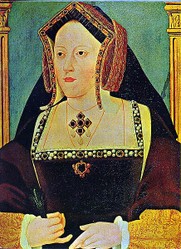


 Alternate History: What If Mary I Had a Child?on 01/26/2015
Alternate History: What If Mary I Had a Child?on 01/26/2015
 Francis II of France Dies: Mary, Queen of Scots Returns Homeon 12/05/2014
Francis II of France Dies: Mary, Queen of Scots Returns Homeon 12/05/2014
 Does Writedge Pay? Payment Proofon 12/03/2014
Does Writedge Pay? Payment Proofon 12/03/2014
 Alternate History: What If Lady Jane Grey Was Not Deposed?on 11/11/2014
Alternate History: What If Lady Jane Grey Was Not Deposed?on 11/11/2014
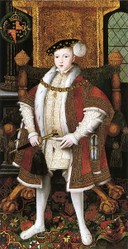
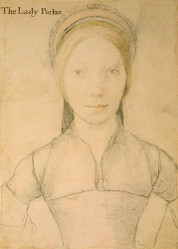
Comments